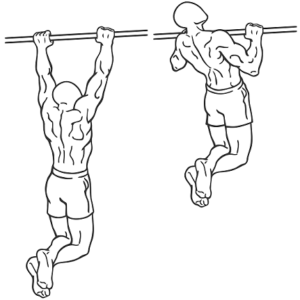Along our fitness journey we eventually hit a plateau.
Whether it’s the amount of weight we can move in a certain lift or the number of perfect form body weight repetitions we perform, progress will eventually stall.
Breaking this plateau can be a source of frustration and discouragement. I know about this all too well. My weakness is the pull-up.
At the beginning of my calisthenics training (about 5 months ago) I struggled to do a single proper form dead hang pull-up (with no kipping). Not only was this embarrassing but also frustrating as people around me in the gym were doing multiple sets like it’s going out of fashion. Over the course of the next few months, with consistent work, I progressed to being able to do 5 proper form dead hang pull-ups in a row. However, for about a month now, I seem to have hit a plateau with the number of repetitions I can perform – for the life of me I can’t seem to hit 6 repetitions!
Being tall and having longer limbs (and levers) I know that I am at a bit of a disadvantage when it comes to executing the pull-up. In a previous blog post I explained why some movements are harder for tall people, if you are interested you can read about it here.
I’m not one to make excuses for something and not put in the work when required. Thus, I don’t think that my height is purely what is limiting my progress. After some serious searching for strategies to break plateaus I came across the concept of ‘Greasing the Groove’.
The purpose of this blog post is to describe the Greasing the Groove method. I will test this method over the next month (concluding it on Monday 24th October 2016) and write a follow up blog post detailing my results.
Greasing the Groove
Greasing the Groove is a method devised by Pavel Tsatsouline, a former Soviet Special Forces instructor.
Pavel’s philosophy is that strength, aside from being somewhat correlated to muscle size, is also a skill.
To become stronger, you have to practice strength. Just like any skill, to get better, you have to consistently put in the work.
There are two primary ways to get strong:
- The most common way is to lift progressively heavier weights (causing micro tears in your muscles). The muscle fibres then recover and adapt to the load so that they rebuild stronger than before.
- The other way to get stronger is by regularly doing strength exercises with lighter reps and weight, but doing them much more often than you would a heavy workout. This teaches your muscles to fire more efficiently, or in other words, “greases the groove”.
The more you practice, the more of a pathway forms between your muscles and your nervous system i.e. the more you grease the neurological groove. By regularly doing a particular strength movement, you help increase the efficiency of the neuro-muscular connections involved in that exercise.
The more efficiently you can perform an exercise, the more reps you can do, and the more reps you can do, the stronger you become.
Here is an excerpt from one of Pavel Tsatsouline’s blog posts:
“I had put my father-in-law Roger Antonson, incidentally an ex-Marine, on a program which required him to do an easy five chins every time he went down to his basement. Each day he would total between twenty-five and a hundred chin-ups hardly breaking a sweat. Every month or so Roger would take a few days off and then test himself. Before you knew it, he could knock off twenty consecutive chins”
This technique is best applied to body weight movements, ones that you can do with ease throughout the day. This is not to say that you can’t apply the same principle to weights (e.g. bench press or squat), however unless you have a gym setup at home or you want to frequent the gym multiple times each time it will be much harder to achieve.
Training Guidelines
1. Train Every Day
By not frying your neuromuscular system during your workouts, you are able to train every day without it leading to overtraining.
2. Train Multiple Times Each Day
This does not mean you need to live at the gym. It means that you space out your sets equally throughout the day, each time taking up only a minimal amount of time.
3. Never Go To failure. Aim For 50% – 80% Of Your Maximum
The moment you approach training to failure, you fry your neuromuscular system and it needs significant rest. Avoid this at all cost. Each set should be 50-80% of your maximum for that movement. Never get to the point where you are grimacing, making funny faces, or holding your breath.
4. One or Two Exercises Only
Use the greasing the groove technique on one to two exercises at any time. Any more and you’ll spread yourself too thin and you’ll lose focus and intensity.
My Plan of Attack
My goal is to break my current pull-up plateau of 5 reps.
I have an attachable pull-up bar at home that fits snugly in the door frame of my bedroom. For the next month I will be aiming to complete at least 5 sets of 4 pull-ups (80% of max) throughout the day. This means that each day I will be completing a total of 20 pull-ups (around 600 in total over the month). I will test myself on Monday 24th October 2016 to see if I was able to break my plateau and I will write an article summarising my findings.
Have you had any experience with this greasing the groove method or any other methods to break through your plateaus? If so, please let me know in the comments section below. I’d love to hear from you.
Stand tall and be proud.


